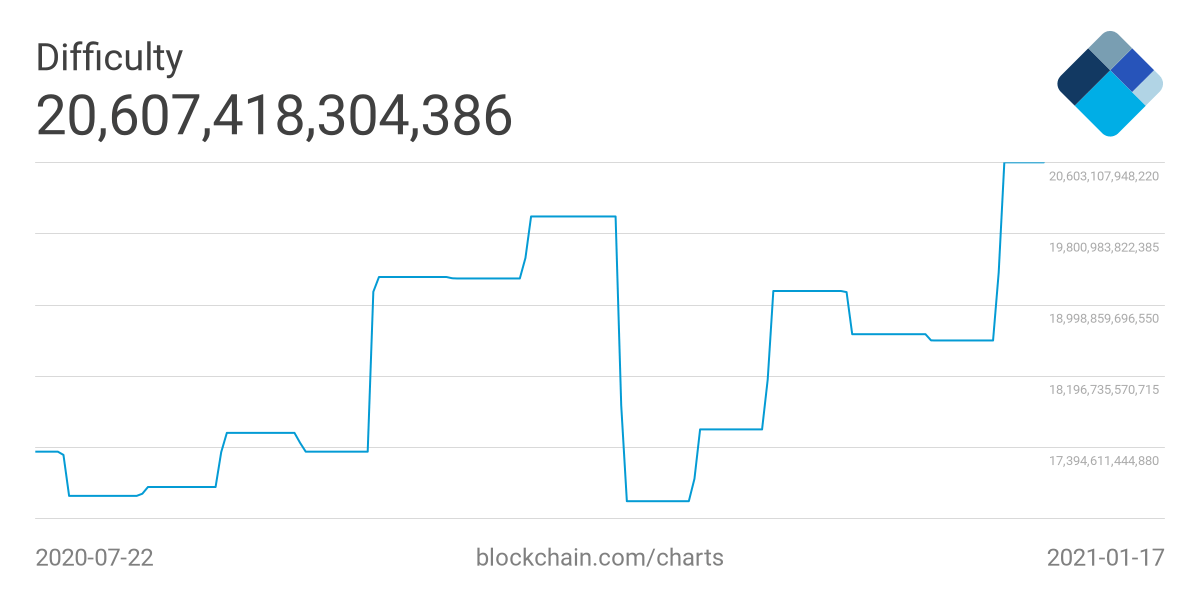Today sees the Bitcoin bulls mounting a fightback following the weekend slide. Although the leading cryptocurrency is up a relatively modest 3%, it’s still welcome news considering the pain of last week’s sell-off.
Despite recent turbulence, Bitcoin’s macro performance has been nothing short of remarkable since the end of Q3 2020. While the lead up to this period saw many months in and around $10k, the end of October 2020 was when things really started to take off.
Over this period, Bitcoin posted near 300% gains before topping at $42k. What was particularly special about this was the move’s speed and strength, which forced the crypto skeptics to second-guess their position.
On that, Marcus Swanepoel, the Chief Executive of crypto exchange Luno, said:
“Even the most bullish of bitcoin advocates could not have foreseen such a meteoric rise in price in such a short space of time.”
Since the rejection at $42k, a sense of normality has returned. With that comes the opportunity to assess the impact of the run-up in relation to other metrics.
On that Twitter analyst, @100trillionUSD noted that mining difficulty remained comparatively flat despite the exponential gains over this period.
In the past, mining difficulty increased as the Bitcoin price increased. The most notable example of this relationship is shown in the chart below, in 2013. During this time, mining difficulty saw a steep rise as BTC went from just over $10 to $1,000.
What is happening with Bitcoin mining difficulty?
Bitcoin mining difficulty is a measure of how hard it is to mine a Bitcoin block. High mining difficulty means it will take more computing power to mine the same number of blocks.
The difficulty is adjusted algorithmically every 2,016 blocks, which comes around approximately every two weeks.
A more detailed analysis shows mining difficulty at the start of October 2020 was 19.32 t. Although this dipped to as low as 16.79 t going into November, difficulty re-adjusted upwards at the end of the year, to 18.6 t.
Over the course of January 2021, as the difficulty became harder, it led to a current difficulty of 20.61 t.

But all the same, a swing of 3 t is a relatively stagnant level of difficulty adjustment, especially considering the $32k swing in price over the same period.
This suggests that new miners are not joining the network despite increased profitability. We would expect to see mining difficulty increase much more to reflect the increased competition if they were.
Bitmain’s official website shows its AntMiner S19 Pro, S19, and T19 are all sold out until August 2021.
Likewise, it’s a similar story at MicroBT, but with no indication of when products are back in stock.
As such, an ASIC miners supply shortage is likely the reason why mining difficulty remains flat relative to price.
Like what you see? Subscribe for daily updates.


 Bitcoin
Bitcoin  Ethereum
Ethereum  Tether
Tether  XRP
XRP  USDC
USDC  Wrapped SOL
Wrapped SOL  Lido Staked Ether
Lido Staked Ether  TRON
TRON  Dogecoin
Dogecoin  Cardano
Cardano  Figure Heloc
Figure Heloc  WhiteBIT Coin
WhiteBIT Coin  Wrapped stETH
Wrapped stETH  Bitcoin Cash
Bitcoin Cash  Wrapped Bitcoin
Wrapped Bitcoin  Chainlink
Chainlink  USDS
USDS  Binance Bridged USDT (BNB Smart Chain)
Binance Bridged USDT (BNB Smart Chain)  LEO Token
LEO Token  WETH
WETH  Hyperliquid
Hyperliquid  Wrapped eETH
Wrapped eETH  Stellar
Stellar  Monero
Monero  Zcash
Zcash  Ethena USDe
Ethena USDe  Coinbase Wrapped BTC
Coinbase Wrapped BTC  Litecoin
Litecoin  Sui
Sui  Avalanche
Avalanche  Hedera
Hedera  Shiba Inu
Shiba Inu  USDT0
USDT0  Dai
Dai  sUSDS
sUSDS  World Liberty Financial
World Liberty Financial  Toncoin
Toncoin  Cronos
Cronos  PayPal USD
PayPal USD  Ethena Staked USDe
Ethena Staked USDe  Mantle
Mantle  Uniswap
Uniswap  Polkadot
Polkadot  Aave
Aave  Bittensor
Bittensor  USD1
USD1  Canton
Canton  Bitget Token
Bitget Token